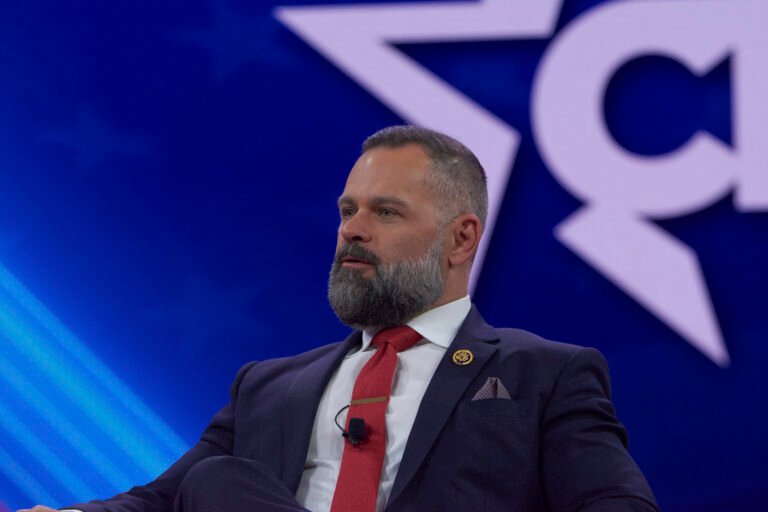
On March 31, Secretary of Defense Pete Hegseth mandated that the Pentagon review its combat arms standards to ensure that the military is making no exceptions for female servicemembers.
This mandate echoes an unfounded belief that Hegseth has been voicing since his confirmation hearing: that women in the military achieved their successes because standards had been lowered for them.
But we were never accommodated, and our standards were never lowered.
Bethany is the 71st woman ever to earn the coveted Ranger tab. Rita was commissioned into the field artillery, a combat arms occupation, in the first full year of gender integration. If servicewomen were ever “accommodated” for, we certainly never saw it.
There have always been stories of how much military standards have been lowered for the sake of women. When we joined the military over a decade ago, such rhetoric was regularly published in major newspapers. The New York Times featured an op-ed in January repeating these same old arguments.
However, we have spent the last year looking at nearly every integration document the Department of Defense has produced since it fully included women in 2016. All anecdotal references to lowered standards are unsubstantiated by every service-level implementation plan, every congressional testimony and every Department of Defense report or update to Congress.
From the moment women entered the combat arms, the Pentagon focused on maintaining standards over anything else — and, in some cases, even created or increased standards in preparation for women.
The Defense Department’s commitment to maintaining standards was so strong that Secretary of Defense Ash Carter listed “Transparent Standards” as his top priority when integrating the force in 2015. Every service branch reaffirmed this commitment in their own integration plans. The Army took it one step further — its implementation plan dedicated 17 of its 54 pages to listing every single standard to codify them and ensure that they wouldn’t change. This was more space than the Army devoted to how it would manage the careers of newly integrated women or how it would protect them from sexual assault.
Every year, the Army and the Marine Corps repeatedly verified that “operationally relevant, occupationally-specific, and gender-neutral standards remain in place for all [Military Occupational Specialties].”At no point did either service report, internally or to Congress, that it had altered its standards to accommodate women or increase their success rates.
In some cases, the Defense Department created combat standards just before integration to ensure consistency during the transition. Anticipating the policy shift, the Marine Corps developed gender-neutral standards for its combat arms specialties only two months before integration in 2015. Similarly, four months before gender inclusion, the Army validated around 445 military occupational standards to formalize task requirement standards for combat positions. Since then, neither service has revised these standards, and the same occupational requirements remain today.
There will always be anecdotes from individual soldiers about how they have encountered women along the way who “had it easier,” but nothing in Defense Department policy substantiates these complaints.
Some claim that the Army’s public revisions of its new fitness test mark a lower standard for women. However, there is a difference between a poorly constructed test and one built to accommodate women — and the fitness test is the former. At the same time, the Department of Defense has offered no evidence that the latter exists.
Hegseth’s comments are not just wrong, they rely on outdated, sexist and disproven stereotypes. But the issue goes deeper than simple misogyny. Women continue to be underrepresented in the combat arms and elite specialties that he criticizes. In many cases, they are not adequately equipped with gender-specific gear to help them execute these tasks as efficiently as their male counterparts. The standards they are held to, developed before women entered the combat arms and without much input from women, may not be the most appropriate standards for the force.
We need honest, nuanced policy discussions around how to support male and female servicemembers equitably. But we will never reach those discussions while servicewomen must continue to fight to disprove decades-old sexist tropes.
Over our entire careers, we have been told we don’t belong, but hearing it directly from the secretary of Defense confirms what our bosses, peers and subordinates have told us. When the secretary says it, it is an attack against servicewomen and the legacy of those before us. It undermines every mile we have run faster than the men. Every night we have spent away from home, sacrificing our lives for the Army’s mission. It tells women that their performance, promotions and accomplishments will always be questioned, no matter how hard they work to meet the same standards as men.
Hegseth seems to affirm what we’ve been told for years — the Department of Defense has no space for women in uniform.
Bethany Russell is a joint masters candidate in Public Policy and Business Administration at Harvard Kennedy School and Harvard Business School. She served as an Army Intelligence officer for six years. Rita Graham is masters candidate in Public Policy at Harvard Kennedy School. She served as an active-duty Army Field Artillery officer for seven years. The views presented here are those of the authors and do not necessarily represent the views of Department of Defense or its components.


